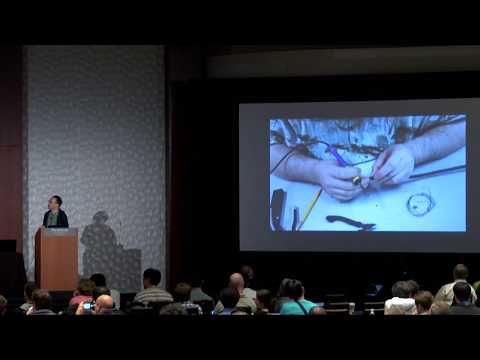CryptoDB
Electromagnetic Information Extortion from Electronic Devices Using Interceptor and Its Countermeasure
| Authors: |
|
|---|---|
| Download: | |
| Presentation: | Slides |
| Abstract: | The problem of information leakage through electromagnetic waves for various devices has been extensively discussed in literature. Conventionally, devices that are under such a threat suffer from potential electromagnetic information leakage during their operation. Further, the information inside the devices can be obtained by monitoring the electromagnetic waves leaking at the boundaries of the devices. The leakage of electromagnetic waves, however, was not observed for some devices, and such devices were not the target of the threat discussed above. In light of this circumstance, this paper discusses an “interceptor” that forces the leakage of information through electromagnetic waves, even from devices in which potential electromagnetic leakage does not occur. The proposed interceptor is a small circuit consisting of an affordable semiconductor chip and wiring and is powered by electromagnetic waves that irradiate from the outside of a device as its driving energy. The distance at which information is obtained is controlled by increasing the intensity of the irradiated electromagnetic waves. The paper presents the structure of the circuit for implementing the proposed interceptor to be used in major input–output devices and cryptographic modules, mounting a pathway designed on the basis of the construction method onto each device. Moreover, it is shown that it is possible to forcefully cause information leakage through electromagnetic waves. To detect the aforementioned threat, the paper also focuses on the changes in a device itself and the surrounding electromagnetic environment as a result of mounting an interceptor and considers a method of detecting an interceptor by both passive and active monitoring methods. |
Video from TCHES 2019
BibTeX
@article{tches-2019-29846,
title={Electromagnetic Information Extortion from Electronic Devices Using Interceptor and Its Countermeasure},
journal={IACR Transactions on Cryptographic Hardware and Embedded Systems},
publisher={Ruhr-Universität Bochum},
volume={2019, Issue 4},
pages={62-90},
url={https://tches.iacr.org/index.php/TCHES/article/view/8345},
doi={10.13154/tches.v2019.i4.62-90},
author={Masahiro Kinugawa and Daisuke Fujimoto and Yuichi Hayashi},
year=2019
}

